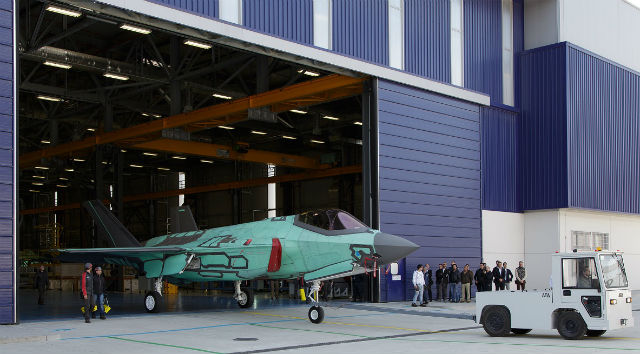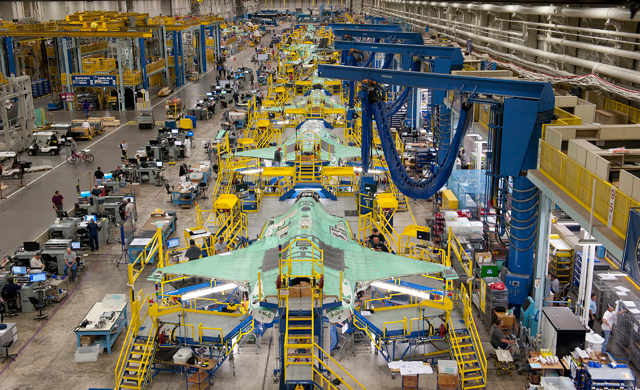The first Lockheed Martin F-35 Lightning II built outside the USA rolled off the final assembly and check out (FACO) line at Cameri air base in Italy on 12 March.
The conventional take-off and landing F-35A is the first assembled at either of the two international FACOs – the other is being prepared in Japan – and is the first of eight on the line overseen by industry partner Alenia Aermacchi. Designated AL-1, it will undergo further check-out testing in preparation for first flight later in 2015.

Lockheed Martin
Alenia Aermacchi's facility employs 750 workers on the Cameri campus, which was built by the Italian government as part of its obligation to the international F-35 enterprise.
The 101-acre Cameri production line features 11 final assembly stations, where control surfaces and systems are joined to the fuselage. Lockheed has 10 final assembly stations at its Fort Worth, Texas, production facility and has plans to increase that to 25 at peak production, which it expects to reach before 2019.

Lockheed Martin
Apart from final assembly, Alenia Aermacchi is producing 40% of the wings for all F-35As worldwide as a second source supplier to Lockheed. The first complete F-35A wing assembly produced at the Cameria site was recently finished and will be shipped to Fort Worth.
As a FACO owner, the Italian defence ministry also has agreed to take over heavy airframe maintenance, overhaul, repair and upgrade (MORU) for European F-35s by 2018. The UK will pick up any additional work needed following a review that will take place about five years into the programme. The Cameri complex has five MORU stations.
“As the European F-35 airframe maintenance, repair, overhaul and upgrade centre, it will generate thousands of long-term, high-tech jobs for the Italian people for decades,” says Lorraine Martin, Lockheed executive vice-president and F-35 programme manager.
In addition to completing F-35As and short take-off and vertical landing F-35Bs for the Italian military, the FACO also will build aircraft for the Royal Netherlands Air Force with remaining capacity for other European programme partners, Lockheed says.
Japan, like Italy, has invested to build its own FACO facility. Japan’s iteration, however, is being built with a vertically oriented production line that will use elevators to move jets through the assembly process.
Australia will split MORU responsibility with Japan in the Pacific region.
Source: FlightGlobal.com



















